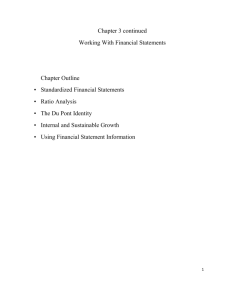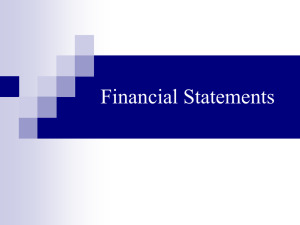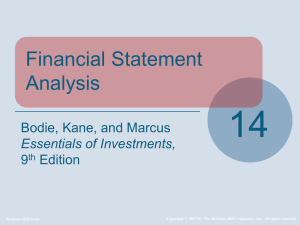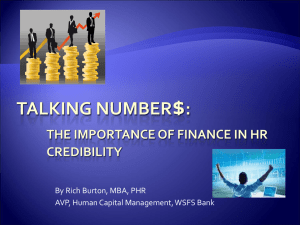case study: ratios and financial planning at s&s air
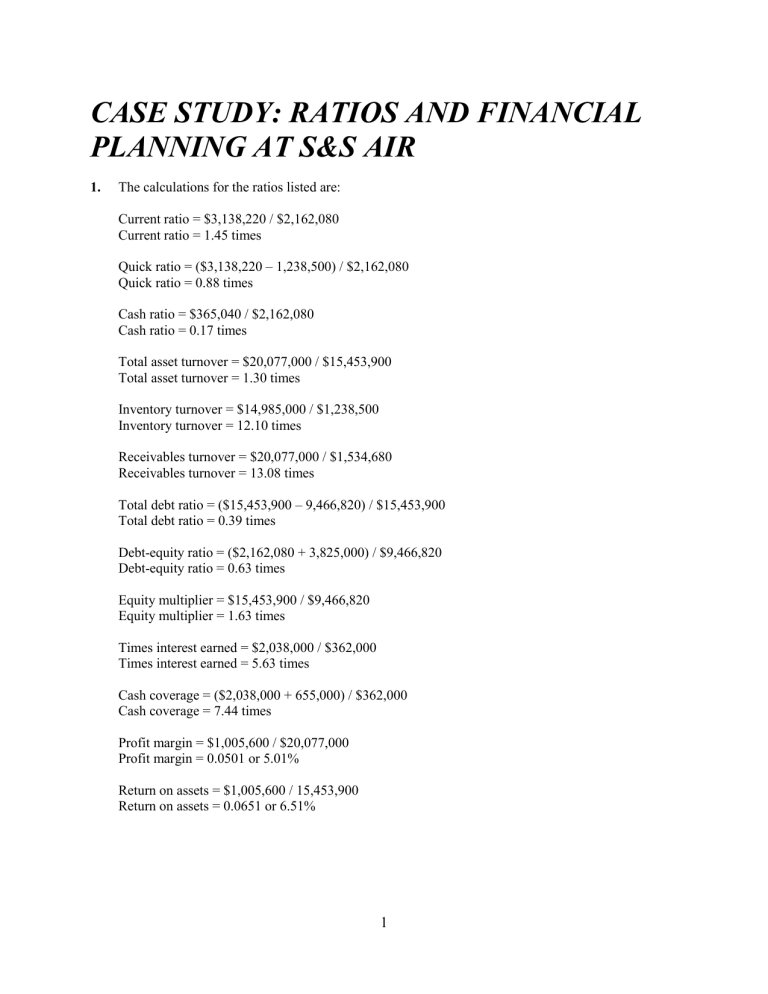
CASE STUDY: RATIOS AND FINANCIAL
PLANNING AT S&S AIR
1.
The calculations for the ratios listed are:
Current ratio = $3,138,220 / $2,162,080
Current ratio = 1.45 times
Quick ratio = ($3,138,220 – 1,238,500) / $2,162,080
Quick ratio = 0.88 times
Cash ratio = $365,040 / $2,162,080
Cash ratio = 0.17 times
Total asset turnover = $20,077,000 / $15,453,900
Total asset turnover = 1.30 times
Inventory turnover = $14,985,000 / $1,238,500
Inventory turnover = 12.10 times
Receivables turnover = $20,077,000 / $1,534,680
Receivables turnover = 13.08 times
Total debt ratio = ($15,453,900 – 9,466,820) / $15,453,900
Total debt ratio = 0.39 times
Debt-equity ratio = ($2,162,080 + 3,825,000) / $9,466,820
Debt-equity ratio = 0.63 times
Equity multiplier = $15,453,900 / $9,466,820
Equity multiplier = 1.63 times
Times interest earned = $2,038,000 / $362,000
Times interest earned = 5.63 times
Cash coverage = ($2,038,000 + 655,000) / $362,000
Cash coverage = 7.44 times
Profit margin = $1,005,600 / $20,077,000
Profit margin = 0.0501 or 5.01%
Return on assets = $1,005,600 / 15,453,900
Return on assets = 0.0651 or 6.51%
1
Return on equity = $1,005,600 / $9,466,820
Return on equity = 0.1062 or 10.62%
2. Boeing is probably not a good aspirant company. Even though both companies manufacture airplanes, S&S Air manufactures small airplanes, while Boeing manufactures large, commercial aircraft. These are two different markets. Additionally, Boeing is heavily involved in the defense industry, as well as Boeing Capital, which finances airplanes.
.
S&S is above the median industry ratios for the current and cash ratios. This implies the company has more liquidity than the industry in general. However, both ratios are above the 3 rd quartile, so there are companies in the industry with higher liquidity ratios than S&S Air. The company may have more predictable cash flows, or more access to short-term borrowing. If you created an inventory to current liabilities ratio, S&S Air would have a ratio that is lower than the industry median. The current ratio is above the industry median, while the quick ratio is above the industry median. This implies that S&S Air has about the same inventory to current liabilities as the industry median. S&S Air has about the same inventory as the industry median, so the inventory to current liabilities ratio is about the same as the median for the industry.
The turnover ratios are all higher than the industry median; in fact, all three turnover ratios are above the upper quartile. This may mean that S&S Air is more efficient than the industry.
The financial leverage ratios are all below the industry median, but above the lower quartile. S&S
Air generally has less debt than comparable companies, but still within the normal range.
The profit margin for the company is about the same as the industry median, the ROA and ROE are both below the industry median, but above the lower quartile.
Overall, S&S Air’s performance seems good, although the liquidity ratios indicate that a closer look may be needed in this area.
Below is a list of possible reasons it may be good or bad that each ratio is higher or lower than the industry. Note that the list is not exhaustive but merely one possible explanation for each ratio.
Ratio Good Bad
Current ratio Better at managing current accounts.
Quick ratio Better at managing current accounts.
Cash ratio Better at managing current accounts.
Total asset turnover Better at utilizing assets.
May be having liquidity problems.
May be having liquidity problems.
May be having liquidity problems.
Assets may be older and depreciated, requiring extensive investment soon.
Inventory turnover Better at inventory management, possibly due to better procedures.
Could be experiencing inventory shortages.
Receivables turnover Better at collecting receivables.
May have credit terms that are too
Total debt ratio Less debt than industry median strict. Decreasing receivables turnover may increase sales.
Increasing the amount of debt can
2
Debt-equity ratio means the company is less likely to experience credit problems.
Less debt than industry median means the company is less likely to experience credit problems.
increase shareholder returns.
Especially notice that it will increase ROE.
Increasing the amount of debt can increase shareholder returns.
Especially notice that it will increase ROE.
Equity multiplier Less debt than industry median means the company is less likely to experience credit problems.
Increasing the amount of debt can increase shareholder returns.
Especially notice that it will increase ROE.
TIE Less debt than industry median means the company is less likely to experience credit problems.
Increasing the amount of debt can increase shareholder returns.
Especially notice that it will increase ROE.
Cash coverage Less debt than industry median means the company is less likely to experience credit problems.
Increasing the amount of debt can increase shareholder returns.
Especially notice that it will increase ROE.
Costs may be too high.
Profit margin Company may be controlling costs better than the industry or charging a higher margin.
ROA
ROE
Company is performing above many of its peers.
Company is performing above many of its peers.
Assets may be old and depreciated relative to industry.
Profit margin and EM could still be increased, which would further increase ROE.
4.
To calculate the internal growth rate, we first need to find the ROA and the retention ratio, so:
ROA = NI / TA
ROA = $1,005,600 / $15,453,900
ROA = 0.0651 or 6.51% b = Addition to RE / NI b = $800,600 / $1,005,600 b = .7961
Now we can use the internal growth rate equation to get:
Internal growth rate = (ROA × b) / [1 – (ROA × b)]
Internal growth rate = [0.0651(0.7961)] / [1 – 0.0651(0.7961)]
Internal growth rate = 0.0546 or 5.46%
To find the sustainable growth rate, we need the ROE, which is:
ROE = NI / TE
ROE = $1,005,600 / $9,466,820
ROE = 0.1062 or 10.62%
3
Using the retention ratio we previously calculated, the sustainable growth rate is:
Sustainable growth rate = (ROE × b) / [1 – (ROE × b)]
Sustainable growth rate = [0.1062(0.7961)] / [1 – 0.1062(0.7961)]
Sustainable growth rate = 0.0924 or 9.24%
The internal growth rate is the growth rate the company can achieve with no outside financing of any sort. The sustainable growth rate is the growth rate the company can achieve by raising outside debt based on its retained earnings and current capital structure.
4
